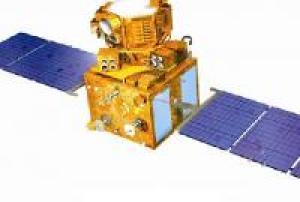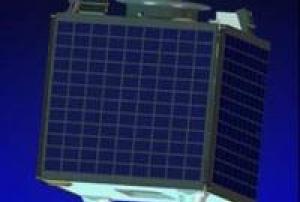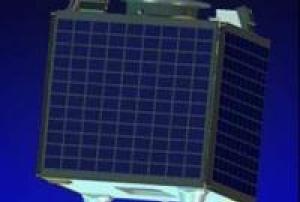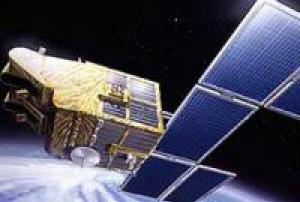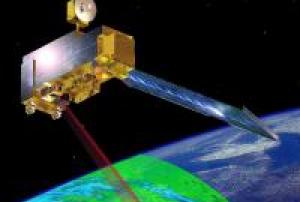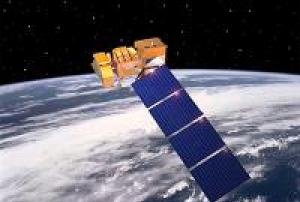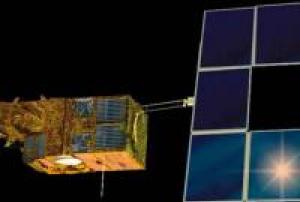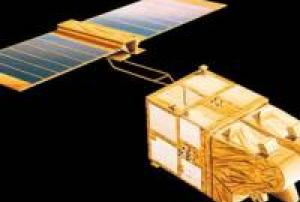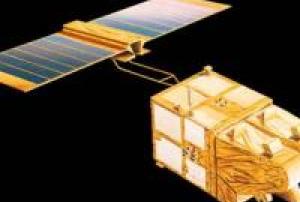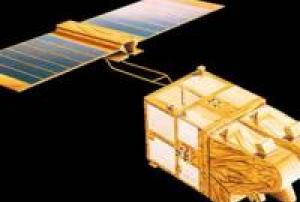Earthquake
Definition
Facts and figures
Further information
UN-SPIDER Regional Support Offices with hazard-specific expertise
Related content on the Knowledge Portal
IRS-P6 is an Earth observation mission within the IRS (Indian Remote-Sensing Satellite) series of ISRO (Indian Space Research Organization), Bangalore, India. The overall objectives of the IRS-P6 mission (ResourceSat-1) are to provide continued remote sensing data services on an operational basis for integrated land and water resources management. IRS-P6 is the continuation of the IRS-1C/1D missions with considerably enhanced capabilities.
Prior to launch, ISRO renamed the IRS-P6 spacecraft to ResourceSat-1, to describe more aptly the application spectrum of its observation data.
Instruments:
read more
LISS-4 (Linear Imaging Self-Scanning Sensor-4)
LISS-3 (Linear Imaging Self-Scanning Sensor-3)
AWiFS (Advanced Wide Field Sensor)17/10/2003On 26 September 2003 Nigeria launched its $13 million national satellite NigeriaSat-1 in Plesetsk, Russia under a seven-nation constellation being handled by a Russian firm, Cosmos. Nigeriasat-1 is a low earth orbit micro satellite for disaster monitoring looking spacecraft, 5-year target design life-span orbit 700km. The launching of the National Satellite, which started development in November 2001, had been postponed from July 2003 because the Russian Space Agency had to launch a military satellite during that period. NigeriaSat-1 is one of five satellites which will make up a network called the Disaster Monitoring Constellation. The other partners in the international consortium are UK, China, Algeria, Turkey, Thailand and Vietnam. Each satellite belongs to one country, but they will share information with each other when disaster monitoring is needed. The Disaster Monitoring Constellation satellites, which cost less than $10 million each, are built by a British-based company,…
read more27/09/2003BNSCSat (British National Space Centre Satellite) or UK-DMC 1 is the UK component of DMC. The Disaster Monitoring Constellation (DMC) is an international programme initially proposed in 1996 and led by SSTL (Surrey Satellite Technology Ltd) from the United Kingdom, to construct a network of five affordable Low Earth Orbit (LEO) microsatellites. The objective is to provide a daily global imaging capability at medium resolution (30-40 m), in 3-4 spectral bands, for rapid-response disaster monitoring and mitigation. The Disaster Monitoring Constellation (DMC) is a novel international co-operation in space, led by SSTL bringing together organisations from seven countries: Algeria, China, Nigeria, Thailand, Turkey, the United Kingdom and Vietnam. The DMC Consortium is forming the first-ever microsatellite constellation bringing remarkable Earth observation capabilities both nationally to the individual satellite owners, and internationally to benefit world-wide humanitarian aid…
read more27/09/2003The satellites SPOT 5 (Satellite Probatoire de l'Observation de la Terre) was a third generation of SPOT earth observation satellite operated by Spot Image.
SPOT 5 used the improved SPOT Mk.3 bus design.
The prime imaging instrument was HRG (High Resolution Geometric), which was built by Astrium SAS of Vélizy, France to continue to improve the HRVIR service of SPOT-4. Two HRG instruments are provided in the conventional SPOT-series double-observation configuration, each with a FOV of 4.13º and the same cross-track pointing capabilities of ±27 º as the HRVIR imager on SPOT-4. The observation coverage of each HRG is 60 km in the nadir direction and >80 km in the oblique configuration.
SPOT-5 carries also the HRS (High Resolution Stereoscopic) instrument, which was developed and built by EADS Astrium SAS, sponsored by CNES and SPOT IMAGE. The objective of this instrument is to provide large-area along-track stereoscopic panchromatic imagery…
read more04/05/2002Terra explores the connections between Earth's atmosphere, land, snow and ice, ocean, and energy balance to understand Earth's climate and climate change and to map the impact of human activity and natural disasters on communities and ecosystems. It was launched on 18 December 1999 and has far exceeded its design life, having a strong chance of operating successfullty into the early 2020s.
Terra is in a circular sun-synchronous polar orbit that takes it from north to south (on the daylight side of the Earth) every 99 minutes.On October 6, 2018 Terra completed 100,000 orbits around Earth.
Approximately the size of a small school bus, the Terra satellite carries five instruments that take coincident measurements of the Earth system.
Instruments:
read more
Advanced Spaceborne Thermal Emission and Reflection Radiometer (ASTER): Creates high resolution images of water, ice, clouds and the land surface using Shortwave Infrared…18/12/1999The government-owned Landsat 7 was successfully launched on April 15, 1999, from the Western Test Range of Vandenberg Air Force Base, California, on a Delta-II expendable launch vehicle. The Earth observing instrument on Landsat 7, the Enhanced Thematic Mapper Plus (ETM+), replicates the capabilities of the highly successful Thematic Mapper instruments on Landsats 4 and 5.
read more
Landsat 7 is the most accurately calibrated Earth-observing satellite, i.e., its measurements are extremely accurate when compared to the same measurements made on the ground. Landsat 7’s sensor has been called “the most stable, best characterized Earth observation instrument ever placed in orbit.” Landsat 7’s rigorous calibration standards have made it the validation choice for many coarse-resolution sensors.
Considered a calibration-triumph, the Landsat 7 mission went flawlessly until May 2003 when a hardware component failure left…15/04/1999The satellites SPOT 4 (Satellite Probatoire de l'Observation de la Terre) was a second generation of SPOT earth observation satellite operated by Spot Image.
SPOT 4 used the improved bus design, which differed from the earlier SPOT series by having an increased lifetime of five years instead of three, a new extended platform design and service module, which can accommodate twice the payload. The propulsion module consists of a frame made of aluminum bars and two capillary tanks holding 158 kg of hydrazine.
The prime imaging instrument was HRVIR (High-Resolution Visible and Infrared sensor), which consisted of two pushbroom imaging units, an improved version of HRV. The two spectral modes are panchromatic and multispectral. The panchromatic band had a resolution of 10 meters, and the three multispectral bands (G,R,NIR) have resolutions of 20 meters.
An additional sensor for SPOT-4, called Vegetation or VMI (Vegetation Monitoring Instrument), with a ground swath…
read more24/03/1998The satellites SPOT 1, 2 and 3 (Satellite Probatoire de l'Observation de la Terre) were the first generation of SPOT earth observation satellites operated by Spot Image.
The first generation SPOT satellites were built on the SPOT Mk.1 bus with a lifetime of three years.
The SPOT satellites were identical, with each carrying two identical HRV (High Resolution Visible) imaging instruments that were able to operate in two modes, either simultaneously or individually. The two spectral modes are panchromatic and multispectral. The panchromatic band had a resolution of 10 meters, and the three multispectral bands (G,R,NIR) have resolutions of 20 meters.
SPOT 3 was orbited on 26 September 1993 on an Ariane-40 H10 rocket. It ended operations in November 1996 due to problems with its stabilization system.
Instruments: 2 HRVs
read more
- 4 spectral bands (1 panchromatic, 3 multispectral)
- imaging swath: 60km x 60km to 80km26/09/1993The satellites SPOT 1, 2 and 3 (Satellite Probatoire de l'Observation de la Terre) were the first generation of SPOT earth observation satellites operated by Spot Image.
The first generation SPOT satellites were built on the SPOT Mk.1 bus with a lifetime of three years.
The SPOT satellites were identical, with each carrying two identical HRV (High Resolution Visible) imaging instruments that were able to operate in two modes, either simultaneously or individually. The two spectral modes are panchromatic and multispectral. The panchromatic band had a resolution of 10 meters, and the three multispectral bands (G,R,NIR) have resolutions of 20 meters.
SPOT-2 was launched on 22 January 1990, on an Ariane-40 H10 rocket. It operated until July 2009. Its orbit was lowered to ensure reentry within 25 years.
Instruments: 2 HRVs
read more
- 4 spectral bands (1 panchromatic, 3 multispectral)
- imaging swath: 60km x 60km to 80km22/01/1990The satellites SPOT 1, 2 and 3 (Satellite Probatoire de l'Observation de la Terre) were the first generation of SPOT earth observation satellites operated by Spot Image.
The first generation SPOT satellites were built on the SPOT Mk.1 bus with a lifetime of three years.
The SPOT satellites were identical, with each carrying two identical HRV (High Resolution Visible) imaging instruments that were able to operate in two modes, either simultaneously or individually. The two spectral modes are panchromatic and multispectral. The panchromatic band had a resolution of 10 meters, and the three multispectral bands (G,R,NIR) have resolutions of 20 meters.
SPOT 1 was launched with the last Ariane-1 rocket on 22 February 1986. At the end of operations in 2003, the orbit was lowered to gradually lose altitude until reentry.
Instruments: 2 HRVs
read more
- 4 spectral bands (1 panchromatic, 3 multispectral)
- imaging swath: 60km x 60km to 80km22/02/1986

